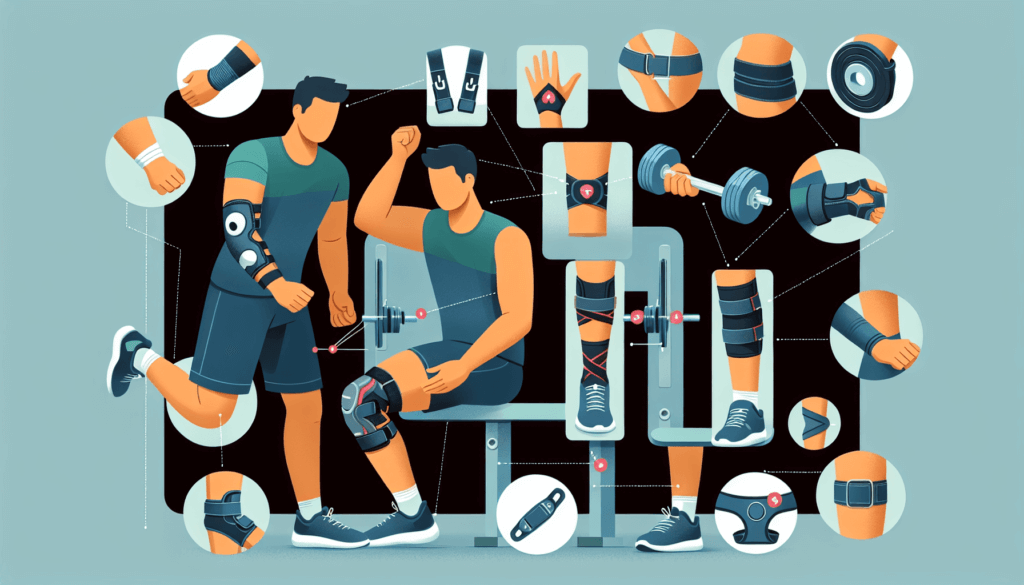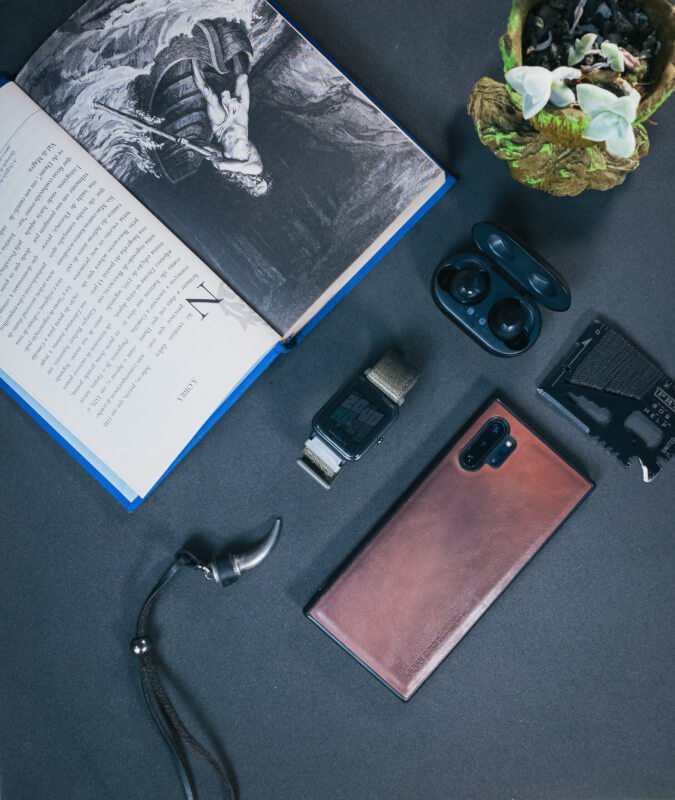You are a fitness enthusiast who understands that incorporating workout accessories into your exercise routine can enhance your performance and make your workouts more enjoyable. However, it is important to use these accessories with caution, as improper usage can lead to injuries. In this article, we will provide you with some top tips on how to effectively and safely use workout accessories to prevent injuries, so you can continue striving towards your fitness goals. Whether you are a beginner or a seasoned athlete, these tips will help you maximize the benefits of workout accessories while minimizing the risk of harm.
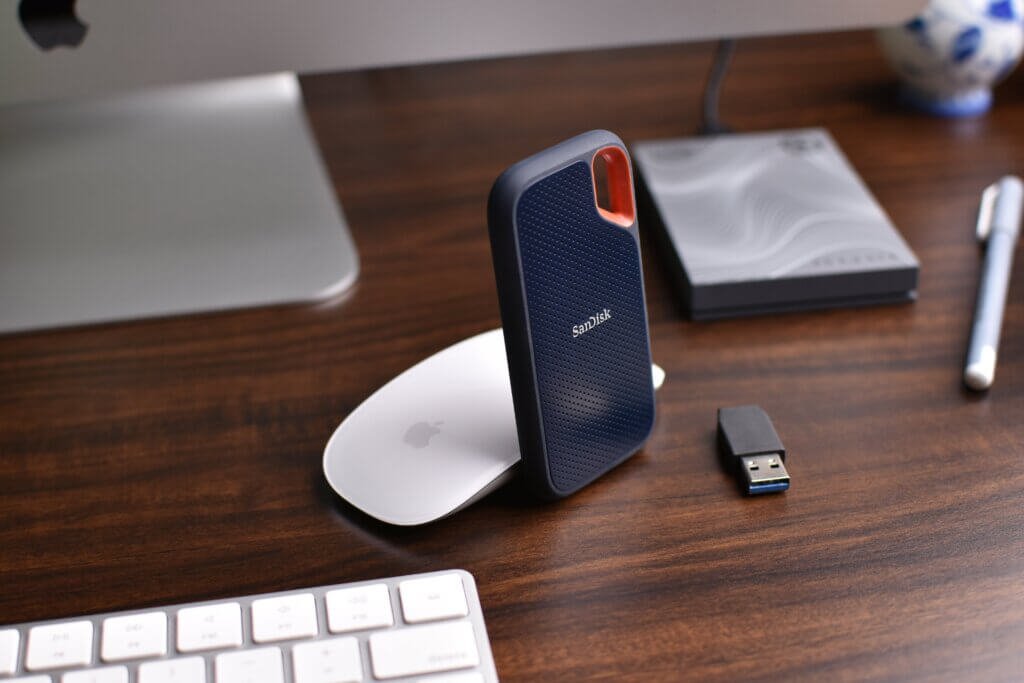
Choose the Right Shoes
When it comes to choosing the right shoes for your workouts, it’s important to consider the activities you’ll be engaging in. Different workouts require different types of footwear to provide the necessary support and protection for your feet. For example, if you’re planning on running, you’ll want to invest in a pair of running shoes that provide adequate cushioning and stability. On the other hand, if you’ll be participating in activities like weightlifting or cross-training, shoes with a flat sole and good traction would be more suitable. By selecting the right shoes for your workout activities, you can ensure that your feet are comfortable and well-supported, reducing the risk of injury.
It’s not just enough to choose the right type of shoe; you also need to ensure that you get the right fit. Ill-fitting shoes can lead to discomfort, blisters, and even more serious injuries such as shin splints or stress fractures. So, take the time to measure your feet and find the appropriate shoe size. Be sure to try on shoes and walk around in them to assess the fit and make sure there’s enough room for your toes to move freely. Remember, getting the right fit is crucial for optimal performance and injury prevention.
Over time, shoes can become worn out and lose their ability to provide adequate support and cushioning. It’s important to regularly check your shoes for signs of wear and tear and replace them when necessary. The general rule of thumb is to replace running shoes every 300-500 miles, or sooner if you notice visible signs of deterioration. Worn-out shoes can increase your risk of injury as they no longer provide the necessary support and shock absorption. Keep an eye out for worn-out treads, uneven soles, or any structural damage. By replacing your worn-out shoes, you can ensure that your feet are properly protected during your workouts.
Use Proper Form and Technique
No matter what type of exercise you’re engaging in, using proper form and technique is crucial for preventing injury. Poor form can put unnecessary stress on your joints, muscles, and ligaments, increasing the risk of sprains, strains, and other injuries. Seeking professional guidance, such as working with a certified personal trainer or attending instructional classes, can help ensure that you learn the correct form and technique right from the start. They can provide valuable insights, corrections, and tips to help you perform exercises correctly and safely.
When starting a new exercise or strength training routine, it’s important to start with low weights or resistance. This allows your body to adapt gradually and build strength over time, reducing the risk of overexertion or strain. Starting with lighter weights also helps you focus on maintaining proper form and technique without compromising your safety. As you become more comfortable and confident, you can progressively increase the weights or resistance to continue challenging your muscles while maintaining proper form.
Quality over quantity should be your mantra when it comes to your workouts. It’s better to perform a few repetitions with proper form and technique than to do many repetitions with poor form. By focusing on quality over quantity, you can ensure that you engage the correct muscles and minimize the risk of injury. This approach also helps you make the most out of your workouts by maximizing the effectiveness of each exercise.
Warm Up and Cool Down
Before diving into your workout, it’s essential to warm up your body to prepare it for the upcoming physical activity. Engaging in dynamic stretching, such as arm circles, leg swings, or lunges, helps increase blood flow to your muscles, improves flexibility, and elevates your body temperature. Dynamic stretching mimics the movements you’ll be performing during your workout, effectively preparing your muscles and joints for the upcoming exercises. This can help reduce the risk of muscle strains, sprains, and other workout-related injuries.
As important as warming up is, so is cooling down after your workout. Cooling down allows your body to gradually return to its resting state and helps prevent dizziness or lightheadedness. Performing static stretches during the cool-down phase can help improve flexibility, reduce muscle soreness, and promote muscle recovery. Static stretches involve holding a stretch for around 30 seconds without bouncing or jerking, allowing your muscles to lengthen and relax.
Listen to Your Body
Your body is an intelligent machine that gives you signals when something isn’t quite right. It’s important to pay attention to any pain or discomfort during your workouts. Pushing through pain can lead to further injury or exacerbation of existing conditions. If you experience sharp or persistent pain, it’s recommended to stop the exercise and seek professional advice. Ignoring pain signals can worsen the injury and prolong your recovery time. Listen to your body and give it rest when needed.
Rest days are just as important as your workout days. They allow your body to recover, repair damaged tissues, and build strength. Without sufficient rest, you increase the risk of overuse injuries, fatigue, and burnout. It’s crucial to schedule regular rest days into your workout routine to give your body the time it needs to recharge. This doesn’t mean you have to be completely sedentary on rest days. Engaging in low-impact activities such as walking or gentle stretching can help promote blood flow and aid in muscle recovery.
Sometimes, modifications or complete cessation of certain exercises are necessary to prevent injuries. If you experience pain or discomfort while performing a specific exercise, it’s important to modify or stop that exercise altogether. This might involve decreasing the range of motion, using lighter weights, or substituting the exercise with a safer alternative. Listening to your body and making the necessary adjustments will help you avoid further injury and allow you to continue your fitness journey safely.
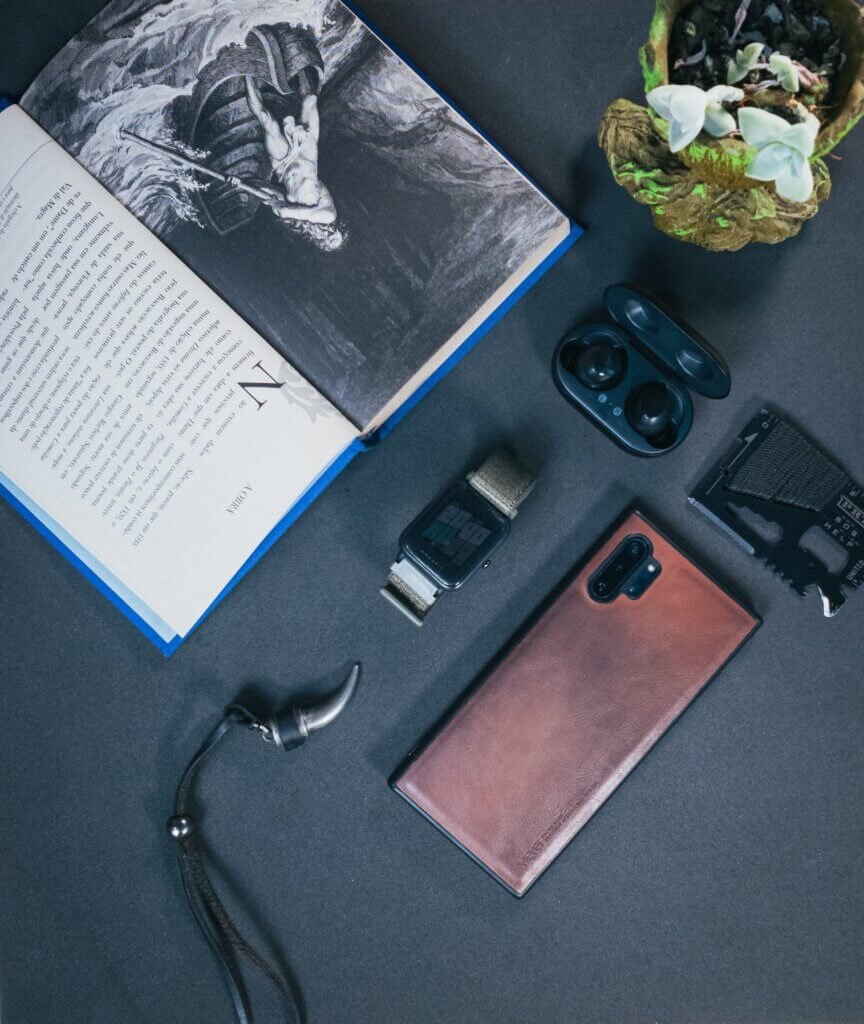
Use Protective Gear
Using the right protective gear can significantly reduce the risk of injuries during your workouts. For activities that put stress on your joints, such as running or jumping, wearing compression sleeves or braces can help provide extra support and stability. These garments can help reduce joint pain, minimize the risk of sprains or strains, and aid in injury prevention. Additionally, wearing gloves or hand wraps during strength training exercises can protect your hands and provide a better grip on the equipment, reducing the likelihood of blisters or calluses.
If you participate in high-impact activities or sports, it’s important to protect your joints with padding. This could include wearing knee pads, elbow pads, or shin guards, depending on the specific activity. The padding serves as a protective barrier against impact and can help absorb shock, minimizing the risk of joint injuries. Investing in and using the appropriate protective gear for your chosen workouts or sports is an important step in ensuring your safety and preventing avoidable injuries.
Maintain Proper Hydration
Proper hydration is essential for optimal performance and injury prevention during workouts. Inadequate hydration can lead to muscle cramps, dizziness, fatigue, and even heatstroke. It’s important to drink sufficient water before, during, and after your workouts to replenish fluids lost through sweat. The amount of water you need depends on factors such as the intensity and duration of your workout, as well as environmental conditions. As a general guideline, aim to drink at least 8 ounces of water before your workout and continue to hydrate regularly throughout your exercise session.
In addition to water, considering electrolyte replenishment can be beneficial if you engage in intense or prolonged workouts. Electrolytes, such as sodium, potassium, and magnesium, are essential for maintaining proper muscle and nerve function. They help regulate fluid balance in the body and support proper hydration. You can replenish electrolytes by consuming sports drinks or electrolyte-rich foods such as bananas, coconut water, or fortified drinks. Remember that maintaining proper hydration is not just limited to your workout period, but also throughout the day to support overall health and well-being.

Invest in Supportive Accessories
Incorporating supportive workout accessories into your routine can help enhance performance and reduce the risk of injuries. Weightlifting belts, for example, provide stability and support to your lower back during heavy lifting exercises. They help maintain proper posture and prevent excessive strain on your spine. If you experience joint pain or instability during exercises that stress your knees or elbows, using knee or elbow sleeves can provide additional support and reduce the risk of injury. These sleeves help stabilize the joints, increase blood flow, and provide compression to promote recovery.
Another useful accessory is ankle straps. Ankle straps can be particularly beneficial for exercises that involve leg and glute strengthening, such as cable kickbacks or hip abductions. They provide extra stability and support to the ankle joint, allowing for safer and more efficient execution of these movements. Investing in supportive accessories that are suitable for your specific workouts can help you maintain proper form, prevent injuries, and get the most out of your training sessions.
Use Appropriate Spotting Techniques
If you’re engaging in weightlifting exercises, it’s important to have a spotter. A spotter is someone who can assist you during exercises that involve heavy weights, such as bench presses or squats. They can provide support, ensure your safety, and help you complete the exercise if you’re unable to do so on your own. When choosing a spotter, make sure they are experienced and knowledgeable about proper spotting techniques. This will ensure that they can effectively assist you while minimizing the risk of injury.
Learning and practicing proper spotting techniques is also essential if you plan to spot someone during their workout. This involves knowing where and how to position yourself, how to provide assistance without endangering yourself or the lifter, and when to intervene if necessary. Proper communication between the lifter and spotter is crucial for a successful spotting session. Clear communication ensures that both parties are on the same page and understand the expectations and signals. By using appropriate spotting techniques, you can reduce the risk of accidents, injuries, and potential training setbacks.
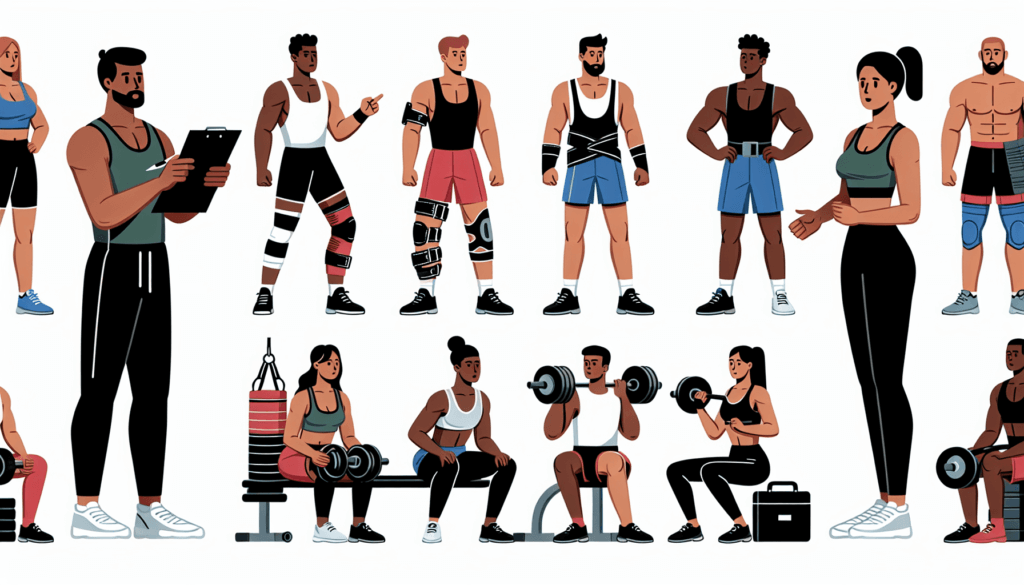
Choose the Right Equipment Size
Using exercise equipment that is the right size for your body is key to preventing injuries. When using gym machines or equipment, it’s important to adjust them to fit your body properly. This includes adjusting seat height, backrest angles, and handle positions to ensure proper alignment and range of motion. Using equipment that is too small or too big for your body can lead to ineffective or dangerous movements, increasing the risk of strains, sprains, or other injuries. If you’re unsure about how to adjust equipment, don’t hesitate to ask a gym staff member or a fitness professional for assistance.
Using the appropriate size bands and straps is also essential for injury prevention. Resistance bands, for example, come in various sizes and strengths. Choosing a band that provides the appropriate level of resistance for your current fitness level is crucial to avoid overexertion or excessive strain on your muscles. The same principle applies to straps used for exercises like pull-ups or deadlifts. Straps that are too long or too short can affect your grip and compromise your safety. Ensuring proper fit and sizing of equipment and accessories helps promote optimal performance and reduces the risk of injury.
For activities that require headgear or helmets, such as cycling or certain contact sports, it’s vital to ensure proper fit and sizing. Ill-fitting helmets or headgear can limit your visibility, expose vulnerable areas, and potentially fail to provide adequate protection in case of impact. Take the time to properly adjust straps, padding, and other fastening mechanisms to ensure a secure and comfortable fit. A well-fitting helmet or headgear can help prevent head injuries and ensure your safety while participating in these activities.
Practice Progression and Gradual Increase
When starting a new exercise program or incorporating new exercises into your routine, it’s important to start with light weights or resistance. This allows your body to adapt gradually and safely to the new demands placed upon it. Starting with lighter weights also helps you develop proper form and technique without compromising your safety. As you become more comfortable and confident with an exercise, you can gradually increase the intensity or load to continue challenging your muscles and promoting strength gains.
It’s important to allow for proper recovery and adaptation between workouts. Overtraining or excessively fast progression can lead to overuse injuries, fatigue, and decreased performance. Your body needs time to repair and rebuild muscle tissues, replenish energy stores, and adapt to the stresses of exercise. Including rest or active recovery days in your routine helps prevent overtraining and promotes long-term progress. Gradually increasing the intensity, load, or duration of your workouts, while still allowing for adequate recovery, will help you avoid injuries and achieve sustainable results.
By following these tips and incorporating them into your fitness routine, you can proactively prevent injuries and ensure a safe and enjoyable workout experience. Remember to choose the right shoes and equipment, use proper form and technique, listen to your body, utilize appropriate protective gear, stay hydrated, and gradually progress towards your fitness goals. Taking care of your body and prioritizing safety will allow you to enjoy the benefits of regular exercise while minimizing the risk of injury. Stay safe, stay active, and have fun on your fitness journey!
